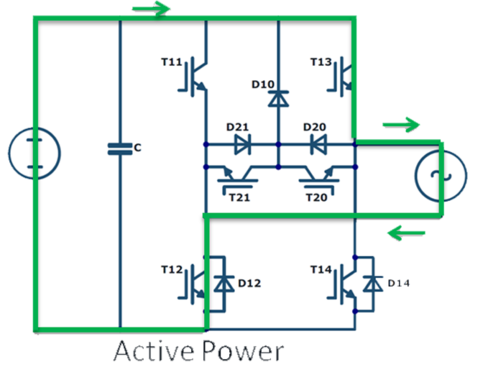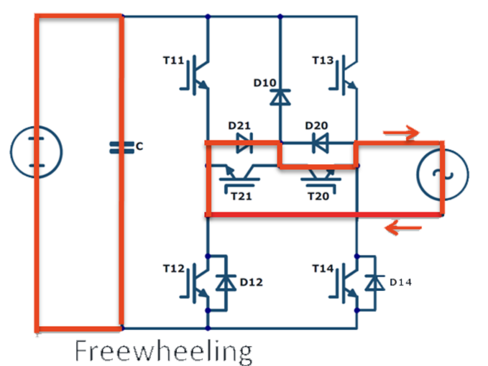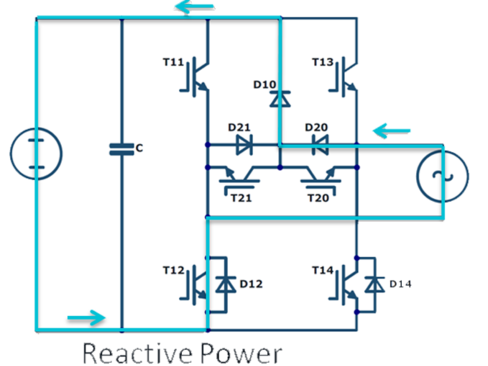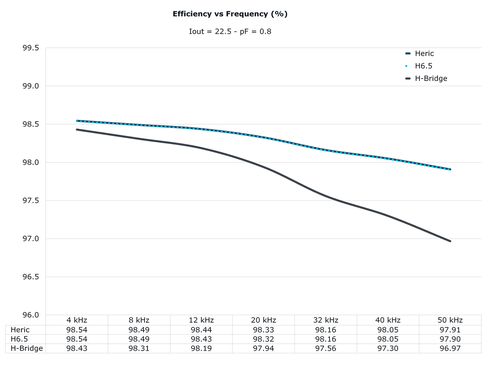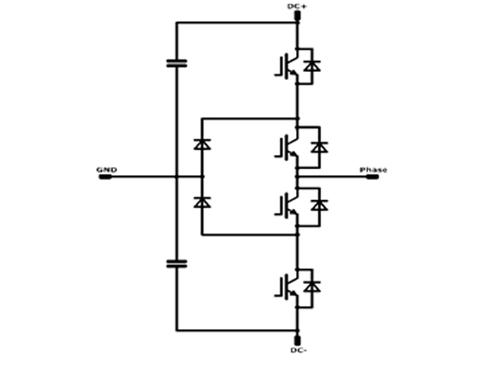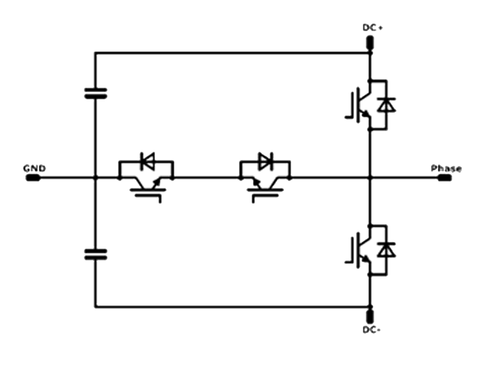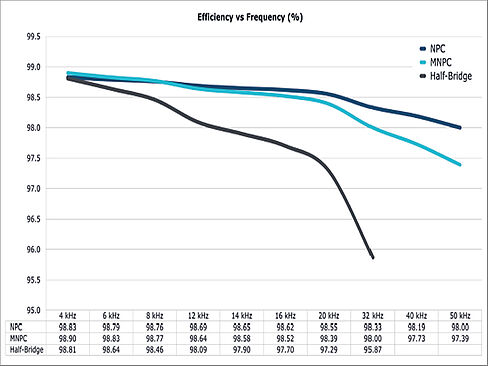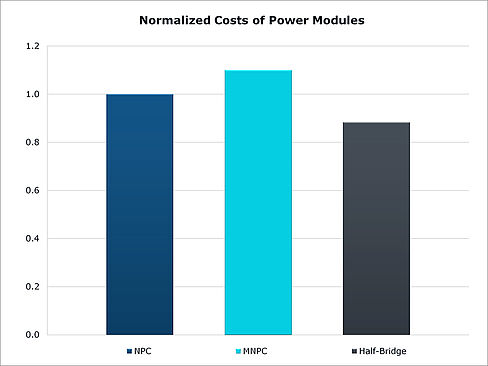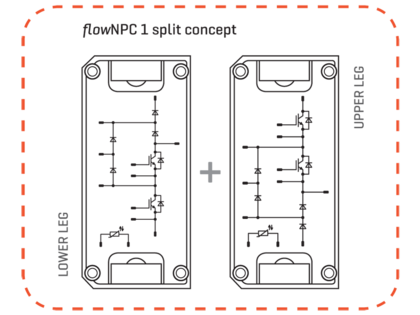Vincotech power modules are installed in systems around the world
Over the last decade, more than 100 GW of solar power were installed with products using Vincotech power modules. This success in the hotly contested market for solar inverters is built on innovative ideas. Vincotech offers modules for the three main photovoltaic (PV) applications:
- Single-phase string inverters
- Three-phase multi-string inverters
- Central inverters
The specifications for these applications are very different, but efficiency, cost, reliability and size are always on engineers' minds.
Single-phase string inverters
Single-phase inverters feature prominently in residential applications with a few kVA. Engineers who design for this power range have a choice to make — power module or discrete components? Component costs are a concern either way, but if we factor manufacturing costs, production yield, power density, and thermal resistance into the equation, the power module starts to look like a very appealing proposition indeed.
The topology and components have to be carefully selected to strike the right balance between cost and performance. Vincotech's flowSOL modules combine the booster and inverter stages with a wide range of components to provide standard solutions for compact designs.
More complex topologies are needed to achieve greater efficiency without driving costs through the roof. flowPACK 1 H6.5 is designed with size, cost and efficiency in mind, making it the solution of choice for single-phase solar inverters. The schematics below show how this topology works:
Commutation loops and efficiency comparison
The patented Heric inverter serves as the benchmark for comparison. The measurements below indicate VIN H6.5's efficiency in contrast to that of Heric and simple H-bridge single-phase solar inverters under typical operating conditions.
Three-phase multi-string inverters
Three-phase multi-string inverters up to 150 kVA are available now, with 200 kVA to come soon. Versatile and able to cover a wide power range, they can be used in residential, commercial and utility-scale systems. Most consist of an input DC/DC boost converter with one or more MPP trackers and an inverter in the output stage.
Vincotech boosters
Components can mixed and match to suit specifications such as the number of MPP trackers, the intended efficiency rating, switching frequency, and so on. flowBOOST modules offer several combinations of Si and SiC components tailored to meet each customer's needs and specifications.
Inverters
The widely acknowledged advantages of three-level topologies have made them the solution of choice for the output stage in all power ranges.
Three-level topologies
Vincotech NPC modules and Vincotech MNPC modules
NPC (Neutral Point Clamping) topology is able to operate exclusively with 650-V components, so higher switching frequencies are easily achieved. MNPC (Mixed Voltage Neutral Point Clamping) topology is superior when comes to static losses, over-voltage and fault-handling. NPC circuits require a turn-off sequence to protect components against over voltage in the event of a (fault) shutdown, but MNPC circuits do not. The crossover (efficiency vs. PWM frequency) between the two topologies depends largely on the installed components. The performance and cost benefits of NPC modules with the latest IGBTs and Si components start at frequencies just above 8 kHz.
Comparison
1500 VDC systems
Cost pressure is driving the development of solar energy systems that can handle 1,000+ VDC. The industry responded with standards and components enabling up to 1500 VDC. Several central inverters have been rolled out for this new market. Wall mounted, three-phase multi-string inverters that can handle more than 150 kVA are also a viable option. This is why the price gap between multi-string and central inverters is closing and the competition between these solutions is heating up for utility-scale applications.
When designing new inverters for higher voltages, the engineer may consider 1700 V semiconductors with conventional topologies such as MNPC. However, their performance beyond a few kHz leaves much to be desired, so these components are not a good match for solar inverters' efficiency, size and cost targets. This is why Vincotech is embracing alternative topologies that accommodate lower-voltage dies.
flowNPC 1 split is equipped with high-speed IGBTs and two fast, low-inductive flow1 modules rated for 2400 V / 150 A. It can handle high DC link voltages, achieve high efficiency levels, and enables full reactive power. IGBT dies are paralleled in the same DCB to reduced internal inductance and improve current sharing for high switching frequencies. This three-level solution also drives down overall system costs.
flowNPC 1 split's benefits at a glance
- Facilitates high DC link voltages
- High-speed IGBT ups efficiency
- Enables full reactive power
- Handles fast switching frequencies
- IGBT dies paralleled in same DCB improve current sharing
- Features integrated temperature sensor
- Comes in compact, low-inductive 12 mm flow 1 housings
Central inverters
Engineers who develop central inverters have been quick to respond to fast technological advances in string inverters. The latter are now a genuine competitor in utility-scale projects, driving the former to evolve and adapt that much faster. Two-level solutions are no longer competitive; more advanced topologies are needed to stay in the game.
Simply adapting two-level housings to three-level topologies is not the answer. This would limit the maximum frequency and negate some of the advantages of NPC and MNPC configurations. This is why Vincotech has tapped its deep well of experience with three-level modules to come up with high-power solutions. Our new low inductive housings are built to handle higher switching frequencies, enabling you to reduce your overhead in passive components and achieve outstanding efficiencies.
VINco X modules meet the demanding requirements for central inverters, while retaining the string inverter's speed and flexibility. Add-ons such as integrated snubber capacitors and asymmetric inductance are available to make this an even more persuasive package. The terminal connection allows DC and AC stages to be split, which makes busbar design that much easier.
A low inductive connection for easy paralleling is also an option.
MNPC 1000 VDC modules and NPC 1500 VDC modules come with a wide variety of power ranges and semiconductors to meet each customer's specifications. The layouts are meticulously designed to guarantee even current distribution and prevent individual dies from overloading.
Downloads
- Vincotech_FLYER_1500V-PV-Solutions.pdf – PDF, 7 MB


